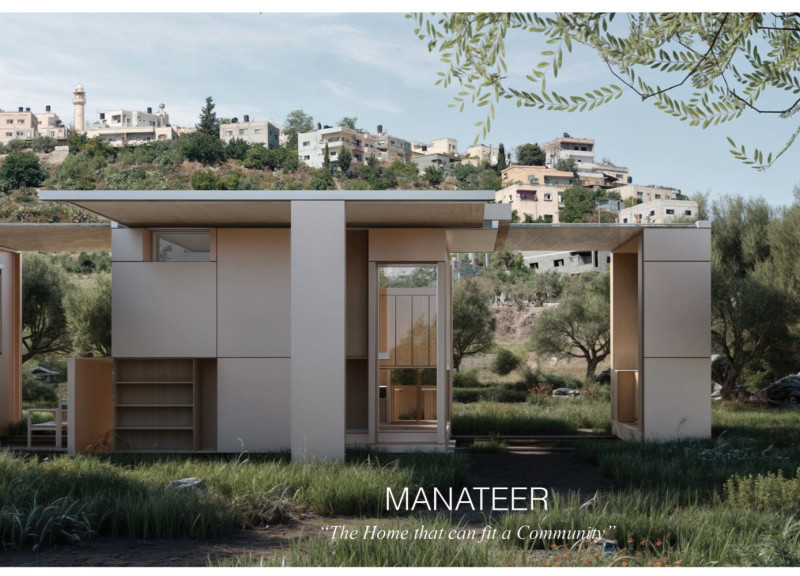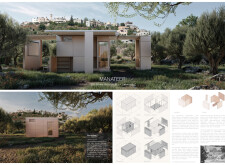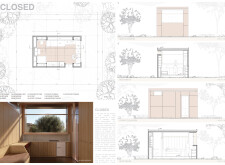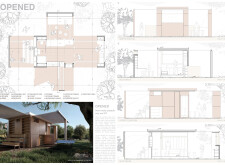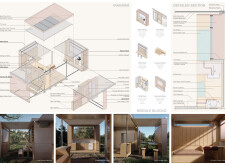5 key facts about this project
### Project Overview
Manateer proposes a modular living solution designed to address contemporary housing needs while fostering community engagement. Located in a landscape rich in natural resources, the project prioritizes environmental sustainability and serves as a prototype for community-centric architecture. The design reflects an understanding of diverse lifestyles, blending individual and communal spaces to promote social connectivity and adaptability.
### Modular Strategy and Adaptability
The core principle of Manateer is its modularity, allowing spaces to expand and contract based on the occupants' requirements. The design features versatility with closed and open configurations, facilitated by sliding walls that enable dynamic transitions between private and communal areas. This adaptability accommodates changing family sizes and functions, rendering the space suitable for both intimate gatherings and larger community events.
### Materiality and Environmental Considerations
The selection of materials plays a pivotal role in both the structural performance and aesthetic appeal of the project. Cross-Laminated Timber (CLT) is utilized to achieve structural integrity while providing a sustainable alternative to conventional building materials. Durable metal sheeting serves as roofing to enhance weather resistance, and aluminum frames optimize natural light infiltration. The incorporation of recycled materials further emphasizes a commitment to sustainability throughout the construction process, reflecting modern ecological practices.
### Spatial Configuration and User Experience
The design of Manateer organizes interior spaces to prioritize functionality and comfort. Different zones are allocated for specific activities—such as sleeping, cooking, and working—promoting an efficient living environment. Designated areas for communal activities foster social interaction, reinforcing the project's commitment to community bonding. Furthermore, multipurpose furniture enhances versatility in living spaces, catering to a range of activities and needs. The integration of sustainable features, including a rainwater harvesting system, promotes self-sufficiency and reinforces its eco-friendly intent while addressing practical concerns in everyday living.


